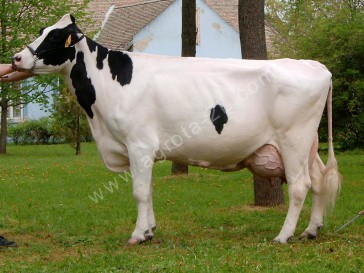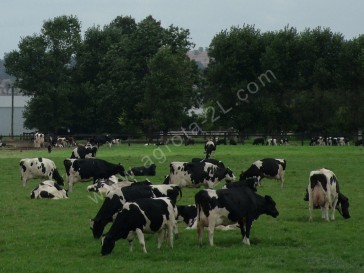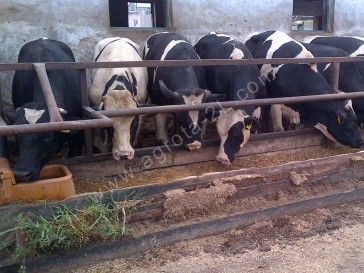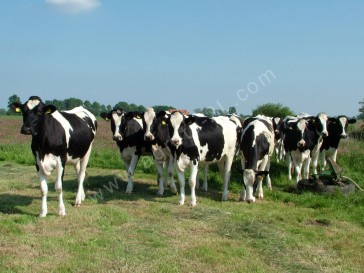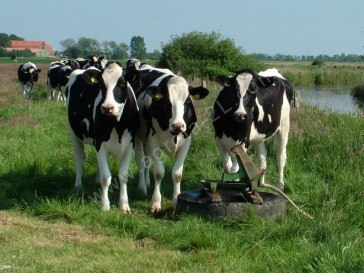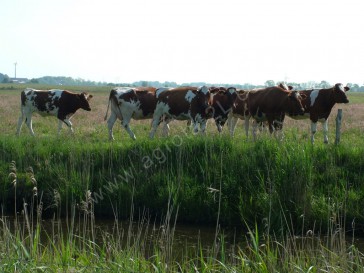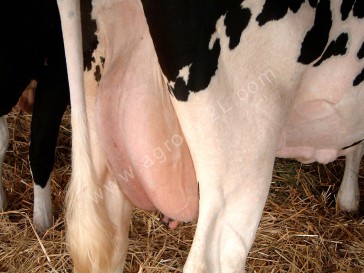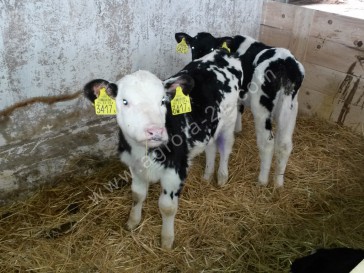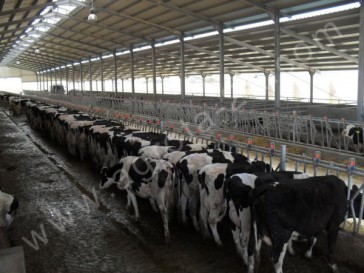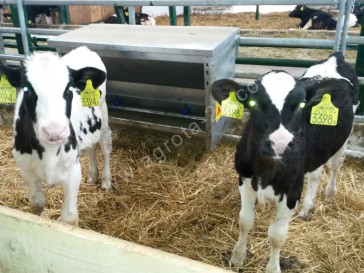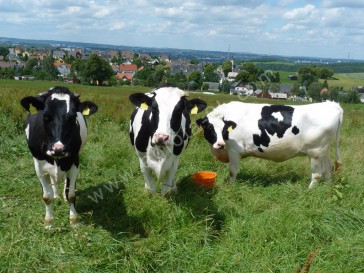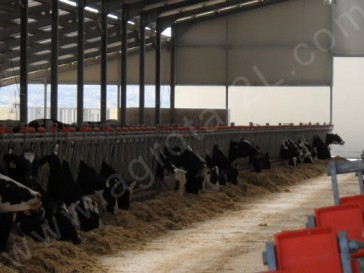Holstein cows have the highest milk production in the world. Holsteins are black and white or red and white colored, large animals having good temper. They are easy to keep in stable, good-natured and easy to handle. The young calves weigh about 40 kg at birth while a mature Holstein cow weigh about 680 kg and stands 148 cm tall at the shoulder. Holstein heifers can be mated from 15 months of age. They are also resistant to stress, exhibit good herd mentality and are not solitary animals. Their normal productive life is approximatelly six years.
For many years, Holsteins were bred and strictly selected to obtain animals which would make best use of grass, the most abundant resource of the northern provices of the Netherlands where the race had its origin. As the Holsteins genetic potential inproves, so feeds and feeding strategies are becoming more and more imortant. It is widely known that the quantity of the produced milk depend on the amount and quality of the feed the cow receives.
Some herds and even some countries average milk production exceeds 10.000 kg per cow per year. The standard lactation period is mostly longer than 305 day, followed by at least two months dry period prior before the next calving. Through artifical insemination the dairy farmer can easily control the direction of breeding using semen from the top ranking bulls of the world so increasing the genetic gain.
Holsteins adapt to all management and utilisation systems. They can be stabled, but are equally suitable for grazing. They can be kept on grassland or in mixed farming systems with bi-annual grazing, or be stabled throughout the year. Neither does it matter whether they are kept in high-lying or low-lying area. Not only are Holstein suitable for low-cost farming systems, they are also eminently suitable as dairy industry cows in intensive farming, which requires the stabling of cows.
Holsteins adapt to all management and utilisation systems. They can be stabled, but are equally suitable for grazing. They can be kept on grassland or in mixed farming systems with bi-annual grazing, or be stabled throughout the year. Neither does it matter whether they are kept in high-lying or low-lying area. Not only are Holstein suitable for low-cost farming systems, they are also eminently suitable as dairy industry cows in intensive farming, which requires the stabling of cows.




